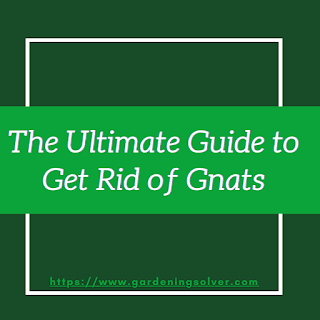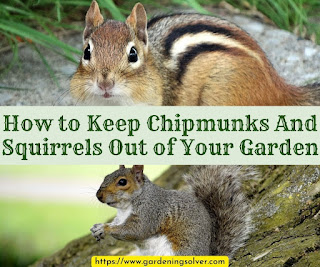How to Get Rid of Squash Bugs
Squash bugs are the most destructive insect pests of cucurbits like zucchini, squash, pumpkin, melon, cucumber, etc. They make gardening a more daunting task than you'd like. Their feeding can cause plant wilt, or even kill your plants.
In this post, we'll look at effective solutions to get rid of squash bugs and the effectiveness of treatment vary by their life stage. For example, most pesticides don’t work on squash bug adults; but they only work on nymph squash bugs. Read on to learn more.
Disclosure: This post contains affiliate links. We may receive commissions on purchases made from our chosen links with no extra cost to you. Learn more.
Method 1 of 3: Squash Bugs Eggs Removal
Removing eggs is unfortunately overlooked when people try to get rid of squash bugs or any other bad bugs in the garden. However, that's where you need to pull up your socks. A female squash bug lays up to 250 eggs in a lifetime and eggs hatch in 10 to 15 days. When those eggs hatch, you may have an infestation.
How to Identify Squash Bugs Eggs
Squash bug eggs are usually found on the undersides of leaves. They're elliptical shaped, and range in colors from reddish brown to metallic brown. The eggs are hard shelled, therefore you'll need to remove them manually.
Here's How to Remove Them
When you discover squash bug eggs on your plants, scrap off the eggs into soapy water or cut out the section of the leaf with eggs and toss them in a waste bin. The other satisfying hack to remove squash bugs eggs includes using duct tape to strip eggs from leaves.
You simply wrap the tape around your fingers (sticky side out) and gently press on leaves to get the eggs off. This method does not only work on eggs, but also on nymphs, adult squash bugs, and other pesky garden bugs you may want to remove. They will stick to the tape without damaging the leaf.
Method 2 of 3: Getting Rid of Squash Bugs Nymph
Immature squash bugs suck cell sap from leaves and leaf stalks just like adult squash bugs. But they're easier to get rid of than destroying adults. They can be managed through pesticides. Spray them directly with an insecticidal soap or other organic insecticides such as spinosad, pyrethrin, or azadirachtin. Make sure to spray underneath the leaves where they may hide. Spray in the morning or late evening when the temperature is cool.
NB: Do not try to spray the squash bugs with toxic insecticides as this is likely to do more harm than good.
Method 3 of 3: Adult Squash Bugs Prevention And Control Tips
The adult squash bugs have hard shells that make them difficult to get rid of with pesticides. Despite that, there are plenty of preventive and control measures that gardeners can do to fight these bugs. Below are the best methods you can use.
Trap Them
Create squash bug traps by laying a few boards, or any flat object around the base of plants. Leave overnight, and you'll find squash bugs congregated beneath the board in the morning. Then quickly flip over the board and smash the squash bugs or hand pick them off, and drop into a bucket of soapy water.
Vacuum
A vacuum cleaner is a great tool for cutting down the squash bug population immediately. It can suck them up faster than you can hand pick them. You can use it to target both nymphs and adult squash bugs. It is absolutely a game changer as you don't need to squish these bugs. After vacuuming, dump the squash bugs into a bucket of soapy water or empty them into a plastic bag and throw it in the trash can.
Use Row Covers
A row cover makes a barrier around your plants to exclude squash bugs. But the only downside is that pollinators can't reach the flower. So you need to use row covers for certain stages of plant development and remove them when your plants begin to flower. Also, make sure to observe and check your plants frequently while the row cover is on them.
Trellising
Squash bugs like to hide under leaves and between the underside of the leaves and the ground. So having your plants supported on a trellis will make it difficult for them to hide. Trellising increases visibility for you to spot any problem quickly, and it also gives you access to reach all parts of the plants without causing any damage.
Introduce Beneficial Insect
Simply let nature do the work by allowing beneficial insects to take up residence in your garden. Predators like preying mantis can help keep squash bugs populations down. Preying mantis does not only feed on squash bugs but on a number of different insects such as Japanese beetles, grasshoppers, aphids, whiteflies, earwigs, stink bugs etc. You can order preying mantis eggs online since they are so difficult to find.
Companion Planting
Companion planting is the simplest and best organic method to control squash bugs in the garden. Purchase marigold and nasturtium seeds and sow them in containers or directly into the soil. Plant them around your plants or in between everything in your garden. They will save your plants from squash bugs and other bad bugs.
Final Thoughts
You now have all the information you need to get rid of squash bugs in your garden. By following these tips and tricks, you'll become free from squash bug infestation in your garden. Try to use a combination of these methods in order to get optimum results.
Also keep in mind to do something as soon as you notice the eggs and nymphs because if you wait, the population will increase and adult squash bugs are difficult to control. Last but not least, make a habit of checking on your plants every day if you can and never go more than 2 days without checking on them.
If you have any questions, feel free to leave a comment below.
You Might Also Like
How to Get Rid of Japanese Beetles
How to Get Rid of Slugs and Snails in the Garden







Comments
Post a Comment
Have something to say? Feel free to leave a comment.